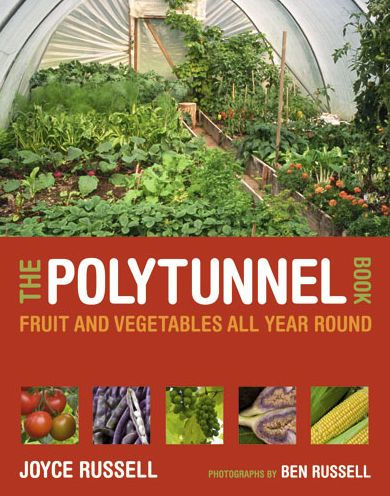‘Until now, there has been next to no information available on how to make the best use of a polytunnel. The Joyce and Ben Russel team have filled that gap, showing us in clear, precise detail how to erect and manage polytunnels, and above all, what to grow in them.’ Joy Larkcom
The Polytunnel Book is the most comprehensive, practical month-to-month growing guide to polytunnel gardening available. Whether you are a complete beginner, or a more experienced grower, this book has got what you need including information on:
- Preparing the site
- How to get the best from each crop
- Identifying and coping with pests
- Making a hotbed
- Composts and organic feeds
- Month-to-month planting plans for year-round growing
But at the heart of this book is Joyce Russell's experienced hand guiding you through each month of the year. It tells what to do and when to do it, in order to grow the best fruit and vegetables all-year-round.
300 colour photographs illustrate the wealth of practical tips and techniques as well as celebrating what can be achieved.
'A polytunnel offers a relatively cheap and simple way to tend crops undercover. And Joyce Russel tells exactly how to do it.’Kitchen Garden Magazine
‘Until now, there has been next to no information available on how to make the best use of a polytunnel. The Joyce and Ben Russel team have filled that gap, showing us in clear, precise detail how to erect and manage polytunnels, and above all, what to grow in them.’ Joy Larkcom
The Polytunnel Book is the most comprehensive, practical month-to-month growing guide to polytunnel gardening available. Whether you are a complete beginner, or a more experienced grower, this book has got what you need including information on:
- Preparing the site
- How to get the best from each crop
- Identifying and coping with pests
- Making a hotbed
- Composts and organic feeds
- Month-to-month planting plans for year-round growing
But at the heart of this book is Joyce Russell's experienced hand guiding you through each month of the year. It tells what to do and when to do it, in order to grow the best fruit and vegetables all-year-round.
300 colour photographs illustrate the wealth of practical tips and techniques as well as celebrating what can be achieved.
'A polytunnel offers a relatively cheap and simple way to tend crops undercover. And Joyce Russel tells exactly how to do it.’Kitchen Garden Magazine

The Polytunnel Book: Fruit and Vegetables All Year Round
192
The Polytunnel Book: Fruit and Vegetables All Year Round
192Related collections and offers

Product Details
| ISBN-13: | 9781781011102 |
|---|---|
| Publisher: | Frances Lincoln |
| Publication date: | 04/04/2013 |
| Sold by: | Barnes & Noble |
| Format: | eBook |
| Pages: | 192 |
| File size: | 25 MB |
| Note: | This product may take a few minutes to download. |
